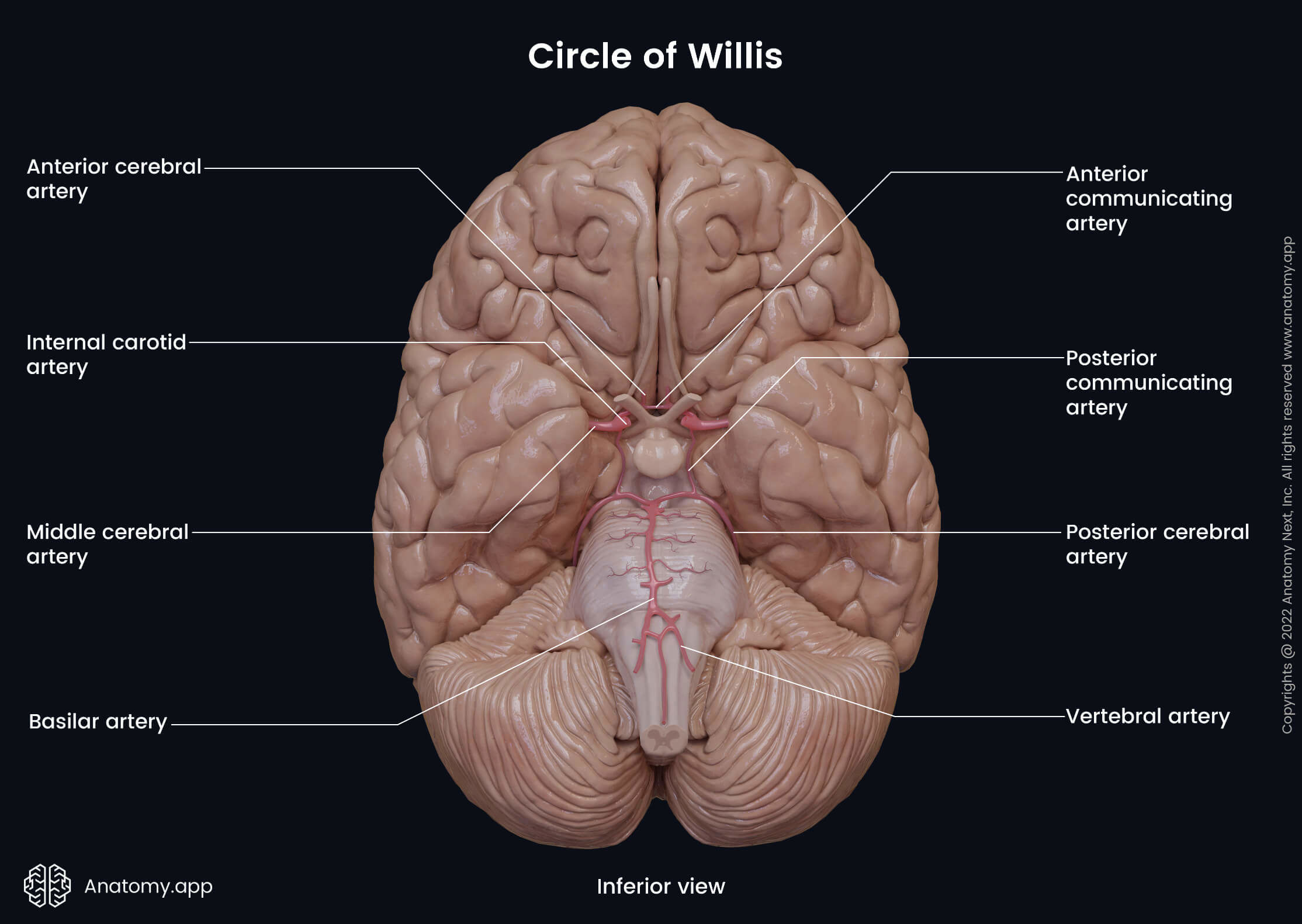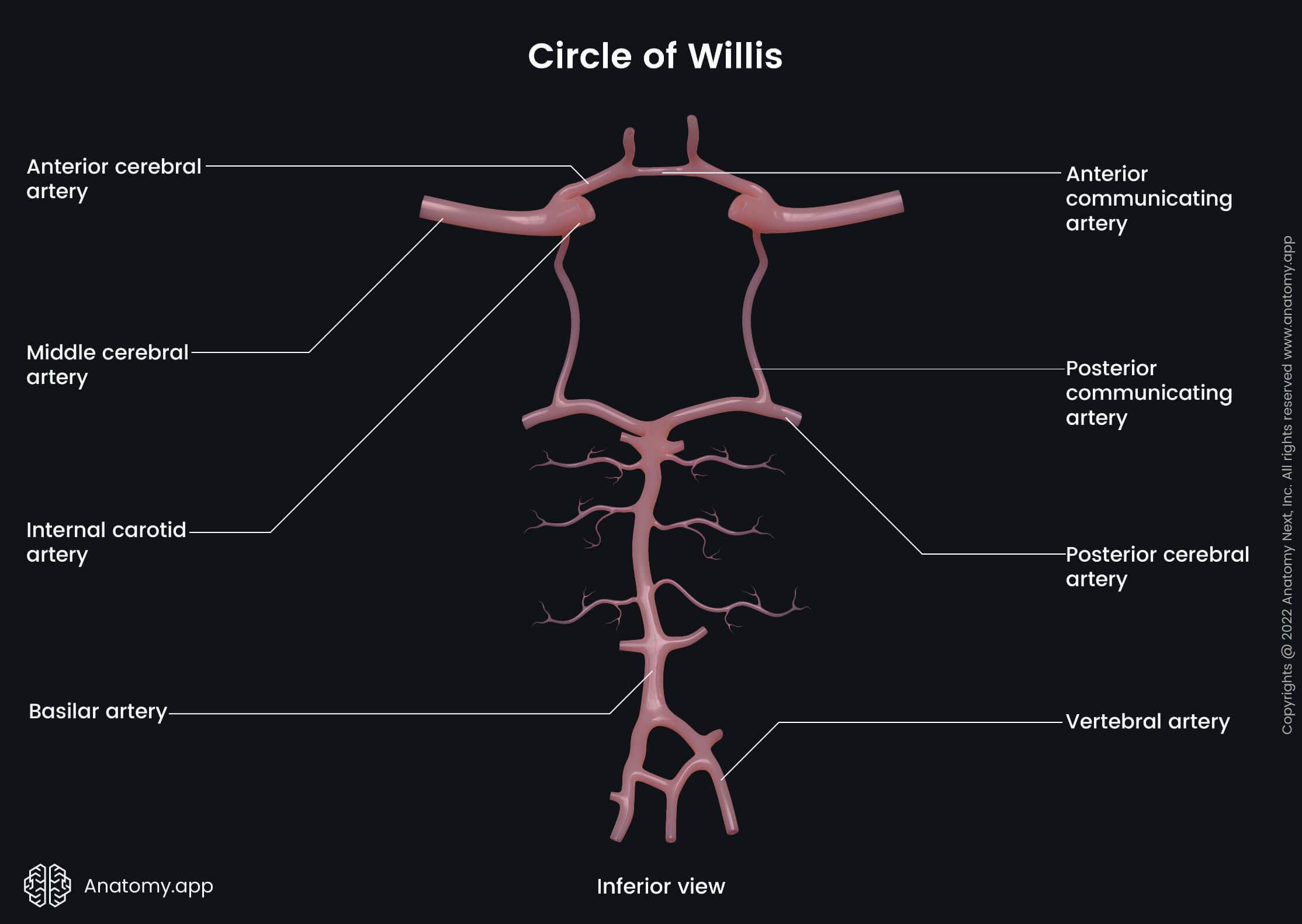- Anatomical terminology
- Skeletal system
- Joints
- Muscles
- Heart
- Blood vessels
- Blood vessels of systemic circulation
- Aorta
- Blood vessels of head and neck
- Arteries of head and neck
- Veins of head and neck
- Blood vessels of upper limb
- Blood vessels of thorax
- Blood vessels of abdomen
- Blood vessels of pelvis and lower limb
- Blood vessels of systemic circulation
- Lymphatic system
- Nervous system
- Respiratory system
- Digestive system
- Urinary system
- Female reproductive system
- Male reproductive system
- Endocrine glands
- Eye
- Ear
Anterior cerebral artery
The anterior cerebral artery (Latin: arteria cerebri anterior) is one of the terminal branches of the internal carotid artery that supplies medial aspects of the frontal and parietal lobes of the cerebral hemispheres.


Course of anterior cerebral artery
The anterior cerebral artery passes medial to the great longitudinal fissure of the cerebrum. It then winds around the genu of the corpus callosum and goes along the medial surface of the cerebral hemisphere, reaching the parietooccipital sulcus. The anterior cerebral artery can be divided into three parts:
- A1 - from the termination of the internal carotid to the junction with the anterior communicating artery;
- A2 - from the junction with the anterior communicating artery to the origin of the callosomarginal artery;
- A3 - extends from the distal origin of the callosomarginal artery, also called the pericallosal artery.
Branches of anterior cerebral artery
The anterior cerebral artery gives rise to two types of branches - cortical and central branches. There are five cortical branches of the anterior cerebral artery:
- Orbital artery
- Frontopolar artery
- Parietal artery
- Callosomarginal artery
- Pericallosal artery
The cortical branches of the anterior cerebral artery supply the motor and somatosensory areas of the cerebral cortex, orbital gyrus, gyrus rectus, medial surface of the frontal and parietal lobes, cingulate gyrus, and the fornix.
The central branches of the anterior cerebral artery arise from its proximal portion and these are the following:
- Anteromedial central branches
- Medial striate artery
The central branches supply the corpus callosum, septum pellucidum, anterior part of the putamen, head of the caudate nucleus, putamen, and the internal capsule.